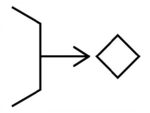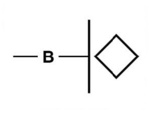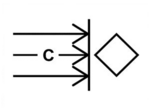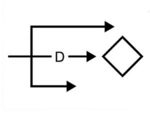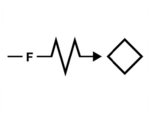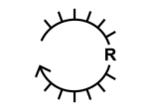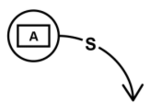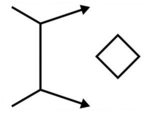Symboliken und Taskverbs: Unterschied zwischen den Versionen
Zur Navigation springen
Zur Suche springen
(Entwurf entfernt) |
|||
| Zeile 1: | Zeile 1: | ||
=== Kartensymbole === | === Kartensymbole === | ||
{| class="wikitable" | {| class="wikitable" | ||
| Zeile 7: | Zeile 5: | ||
!Beschreibung | !Beschreibung | ||
!Abkürzung | !Abkürzung | ||
|- | |- | ||
|[[Datei:Checkpoint.png|rahmenlos]] | |[[Datei:Checkpoint.png|rahmenlos]] | ||
| Zeile 13: | Zeile 10: | ||
|Ein vorbereiteter Punkt an dem die Fahrzeuge und Personen kontrolliert werden können. | |Ein vorbereiteter Punkt an dem die Fahrzeuge und Personen kontrolliert werden können. | ||
|CP | |CP | ||
|- | |- | ||
|[[Datei:LZ.png|rahmenlos]] | |[[Datei:LZ.png|rahmenlos]] | ||
| Zeile 24: | Zeile 15: | ||
|Ein definierter Bereich in dem Luftfahrzeuge landen. | |Ein definierter Bereich in dem Luftfahrzeuge landen. | ||
|LZ | |LZ | ||
|- | |- | ||
| | | | ||
|Objective Rally Point | |Objective Rally Point | ||
|Eine Variante des Rally Points. Bei | |Eine Variante des Rally Points. Bei diesen Rally Points handelt es sich um den letzten sicheren RLY vor einem Objective. Von hier aus wird die Leadership Reconnaissance begonnen. | ||
|ORP | |ORP | ||
|- | |- | ||
|[[Datei:PP.png|rahmenlos]] | |[[Datei:PP.png|rahmenlos]] | ||
| Zeile 39: | Zeile 25: | ||
|Ein bestimmter Punkt an dem sich eine Einheit durch eine andere, stationäre, Einheit bewegt. | |Ein bestimmter Punkt an dem sich eine Einheit durch eine andere, stationäre, Einheit bewegt. | ||
|PP | |PP | ||
|- | |- | ||
|[[Datei:PZ.png|rahmenlos]] | |[[Datei:PZ.png|rahmenlos]] | ||
|Pickup Zone | |Pickup Zone | ||
|Ein bestimmter Bereich an dem Einheiten von einem Helikopter aufgenommen werden | |Ein bestimmter Bereich an dem Einheiten von einem Helikopter aufgenommen werden. | ||
|PZ | |PZ | ||
|- | |- | ||
|[[Datei:POI.png|rahmenlos]] | |[[Datei:POI.png|rahmenlos]] | ||
|Point of Interest | |Point of Interest | ||
|Ein markanter Punkt der für die Mission von Interesse sein kann | |Ein markanter Punkt der für die Mission von Interesse sein kann, aber kein Objective ist. | ||
|POI | |POI | ||
|- | |- | ||
|[[Datei:RLY.png|rahmenlos]] | |[[Datei:RLY.png|rahmenlos]] | ||
| Zeile 57: | Zeile 40: | ||
|Ein markanter Punkt in der Umgebung um das Sammeln und die Organisation von Einheiten zu erleichtern. | |Ein markanter Punkt in der Umgebung um das Sammeln und die Organisation von Einheiten zu erleichtern. | ||
|RLY | |RLY | ||
|- | |- | ||
|[[Datei:RP.png|rahmenlos]] | |[[Datei:RP.png|rahmenlos]] | ||
|Release Point | |Release Point | ||
|Ein bestimmter Punkt auf einer geplanten Route an der die | |Ein bestimmter Punkt, auf einer geplanten Route an der die Teilelemente aus der Kontrolle des übergordneten Elements entlassen werden. | ||
|RP | |RP | ||
|- | |- | ||
|[[Datei:TRP.png|64x64px]] | |[[Datei:TRP.png|64x64px]] | ||
| Zeile 69: | Zeile 50: | ||
|Ein Punkt zur Einleitung und Kontrolle von Feuerunterstützung jeglicher Art | |Ein Punkt zur Einleitung und Kontrolle von Feuerunterstützung jeglicher Art | ||
|TRP | |TRP | ||
|- | |- | ||
|[[Datei:SP.png|rahmenlos]] | |[[Datei:SP.png|rahmenlos]] | ||
|Start Point | |Start Point | ||
|Ein bestimmter Punkt auf einer geplanten Route an der die | |Ein bestimmter Punkt auf einer geplanten Route an der die Teillemente unter die Kontrolle des übergeordneten Elements fallen. | ||
|SP | |SP | ||
|} | |} | ||
| Zeile 119: | Zeile 62: | ||
!Bezeichnung | !Bezeichnung | ||
!Beschreibung | !Beschreibung | ||
! | !Abürzung | ||
|- | |- | ||
|[[Datei:Attack by fire.png|150x150px]] | |[[Datei:Attack by fire.png|150x150px]] | ||
|Attack by fire | |Attack by fire | ||
|Attack by fire ist eine taktische Missionsaufgabe, bei der direktes und indirektes Feuer, um einen Feind aus der Entfernung zu bekämpfen. | |Attack by fire ist eine taktische Missionsaufgabe, bei der direktes und indirektes Feuer, um einen Feind aus der Entfernung zu bekämpfen. | ||
| | |ABF | ||
|- | |- | ||
|[[Datei:Block.png|rahmenlos|150x150px]] | |[[Datei:Block.png|rahmenlos|150x150px]] | ||
|Block | |Block | ||
|Block ist eine taktische Missionsaufgabe, die dem Feind den Zugang zu einem Gebiet oder einem Zugangsweg verwehrt. | |Block ist eine taktische Missionsaufgabe, die dem Feind den Zugang zu einem Gebiet oder einem Zugangsweg verwehrt. | ||
| | |B | ||
|- | |- | ||
|[[Datei:Clear.png|150x150px]] | |[[Datei:Clear.png|150x150px]] | ||
|Clear | |Clear | ||
|Clear ist eine taktische Missionsaufgabe, bei der eine Einheit alle feindliche Kräfte innerhalb eines zugewiesenen Gebietes vernichtet. | |Clear ist eine taktische Missionsaufgabe, bei der eine Einheit alle feindliche Kräfte innerhalb eines zugewiesenen Gebietes vernichtet. | ||
| | |C | ||
|- | |- | ||
|[[Datei:Destroy.png|64x64px]] | |[[Datei:Destroy.png|64x64px]] | ||
|Destroy | |Destroy | ||
|Destroy ist eine taktische Missionsaufgabe, die eine gegnerische Streitkraft physisch gegnerische Streitkräfte bis zu ihrer Wiederherstellung kampfunfähig macht. | |Destroy ist eine taktische Missionsaufgabe, die eine gegnerische Streitkraft physisch gegnerische Streitkräfte bis zu ihrer Wiederherstellung kampfunfähig macht. | ||
| | |D | ||
|- | |- | ||
|[[Datei:Disrupt.png|150x150px]] | |[[Datei:Disrupt.png|150x150px]] | ||
|Disrupt | |Disrupt | ||
|Disrupt ist eine taktische Missionsaufgabe, bei der eine Einheit die Formation oder das Tempo des Gegners stört und die gegnerische Truppe dazu bringt vorzeitig oder bruchstückhaft anzugreifen. | |Disrupt ist eine taktische Missionsaufgabe, bei der eine Einheit die Formation oder das Tempo des Gegners stört und die gegnerische Truppe dazu bringt vorzeitig oder bruchstückhaft | ||
| | anzugreifen. | ||
|D | |||
|- | |- | ||
|[[Datei:FIX.png|150x150px]] | |[[Datei:FIX.png|150x150px]] | ||
|Fix | |Fix | ||
|Fix ist eine taktische Missionsaufgabe, bei der eine Einheit den Feind für einen bestimmten Zeitraum daran hindert, sich von einem bestimmten Ort aus zu bewegen | |Fix ist eine taktische Missionsaufgabe, bei der eine Einheit den Feind für einen bestimmten Zeitraum daran hindert, sich von einem bestimmten Ort aus zu bewegen | ||
| | |F | ||
|- | |- | ||
|[[Datei:Penetrate.png|rahmenlos|64x64px]] | |[[Datei:Penetrate.png|rahmenlos|64x64px]] | ||
|Penetration | |Penetration | ||
| Der Auftrag die feindlichen Linien zu durchbrechen. | | Der Auftrag die feindlichen Linien zu durchbrechen. | ||
| | |P | ||
|- | |- | ||
|[[Datei:Retain.png|150x150px]] | |[[Datei:Retain.png|150x150px]] | ||
|Retain | |Retain | ||
|Retain ist eine taktische Missionsaufgabe, bei der eine Einheit die feindliche Besetzung oder Nutzung eines Geländes verhindert. | |Retain ist eine taktische Missionsaufgabe, bei der eine Einheit die feindliche Besetzung oder Nutzung eines Geländes verhindert. | ||
| | |R | ||
|- | |- | ||
|[[Datei:Seize.png|150x150px]] | |[[Datei:Seize.png|150x150px]] | ||
|Seize | |Seize | ||
|Seize ist eine taktische Missionsaufgabe, bei der eine Einheit ein ein bestimmtes Gebiet durch den Einsatz überwältigender Gewalt in Besitz nimmt | |Seize ist eine taktische Missionsaufgabe, bei der eine Einheit ein ein bestimmtes Gebiet durch den Einsatz überwältigender Gewalt in Besitz nimmt | ||
| | |S | ||
|- | |- | ||
|[[Datei:SFP.png|rahmenlos|150x150px]] | |[[Datei:SFP.png|rahmenlos|150x150px]] | ||
|Support by fire | |Support by fire | ||
|Support by fire ist eine taktische Missionsaufgabe, bei der eine Einheit den Feind mit direktem Feuer angreift, um eine andere manövrierenden Truppe. | |Support by fire ist eine taktische Missionsaufgabe, bei der eine Einheit den Feind mit direktem Feuer angreift, um eine andere manövrierenden Truppe. | ||
| | |SBF | ||
|} | |} | ||









